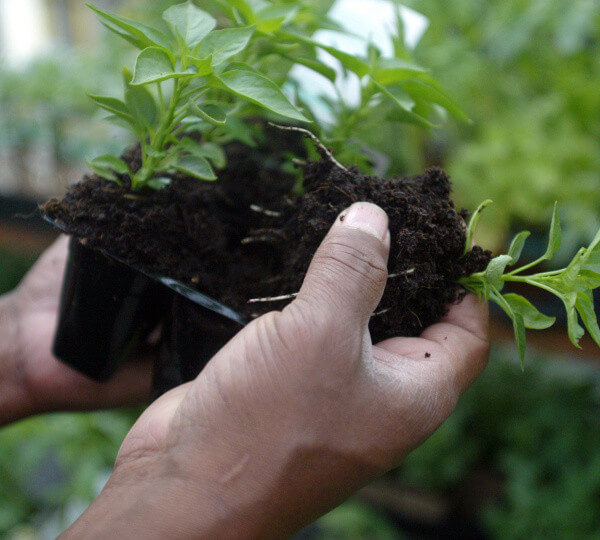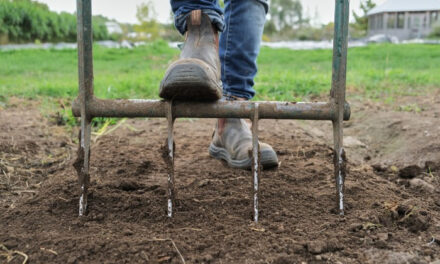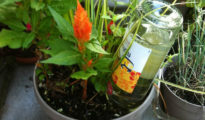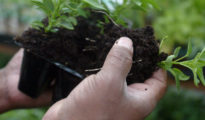Soil is often seen merely as the backdrop to our gardens—a static, inert medium in which plants grow. However, this perception couldn't be further from the truth. Soil is a vibrant, living ecosystem that plays a critical role in the health of our planet and our gardens. It's a complex mixture of minerals, organic matter, microorganisms, and countless other life forms, all interacting in ways that influence the growth and health of plants. This blog post delves into the secret life of soil, highlighting the importance of soil health and how gardeners can nurture it through composting, cover crops, and soil testing to achieve a more productive and sustainable garden.
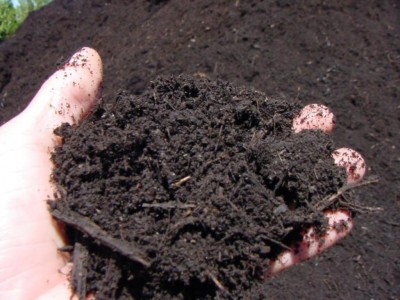
The Living Soil
Soil health is the foundation of productive gardening. Healthy soil supports a rich diversity of life, including bacteria, fungi, protozoa, insects, and worms, all of which contribute to the ecological balance that plants need to thrive. These organisms play essential roles in decomposing organic matter, cycling nutrients, improving soil structure, and combating pests and diseases.
The Role of Organic Matter
Organic matter is the cornerstone of soil health. It improves soil structure, making it more porous and better able to retain moisture and air—both critical for plant roots. It also feeds the soil's microbiome, the community of microorganisms that is essential for nutrient cycling. As organic matter is broken down, nutrients are released in a form that plants can absorb.
Composting: Turning Waste into Gold
Composting is one of the most effective ways to enrich your soil. It involves the aerobic decomposition of organic waste—like kitchen scraps, lawn clippings, and fallen leaves—into a rich, dark, crumbly substance that is excellent for adding to garden soil. Composting not only recycles waste but also reduces landfill use, cuts greenhouse gas emissions, and creates a nutrient-rich soil amendment that can improve plant health and yield.
The Magic of Cover Crops
Cover crops, such as clover, vetch, and rye, are planted not to be harvested but to cover the soil, hence their name. They offer myriad benefits for soil health, including:
- Preventing Erosion: Cover crops protect soil from wind and water erosion.
- Improving Soil Structure: The roots of cover crops help to break up compacted soil, improving aeration and water infiltration.
- Enhancing Fertility: Many cover crops, especially legumes, can fix atmospheric nitrogen, enriching the soil with this essential nutrient.
- Suppressing Weeds: A dense planting of cover crops can outcompete weeds, reducing the need for herbicides.
- Attracting Beneficial Insects: Flowers of cover crops can attract pollinators and predators of common pests.
Incorporating cover crops into your garden rotation is a simple yet effective way to maintain and improve soil health.
Soil Testing: Know What You Grow
Soil testing is a vital tool for understanding the specific needs of your garden. A soil test can provide valuable information on pH, nutrient levels, and organic matter content, enabling you to make informed decisions about soil amendments and fertilization. By addressing the specific needs of your soil, you can avoid the overuse of fertilizers, which is not only cost-effective but also better for the environment.
Implementing Soil Health Practices
Enhancing soil health is an ongoing process, not a one-time fix. Here are some steps to get started:
- Start Composting: Set up a compost bin or pile and begin adding organic waste. Over time, you'll create a valuable source of organic matter for your garden.
- Plant Cover Crops: After harvesting your garden, plant a cover crop to protect and enrich the soil. In spring, you can till the cover crops into the soil as a green manure, further enhancing soil fertility.
- Test Your Soil: Conduct a soil test to determine your garden's specific needs. Amend your soil based on test recommendations to ensure optimal plant growth.
- Mulch: Apply mulch around your plants to conserve moisture, suppress weeds, and add organic matter to the soil as it breaks down.
- Practice Crop Rotation: Rotate crops each year to prevent the depletion of specific nutrients and reduce pest and disease problems.
The Important Role of the Soil's pH
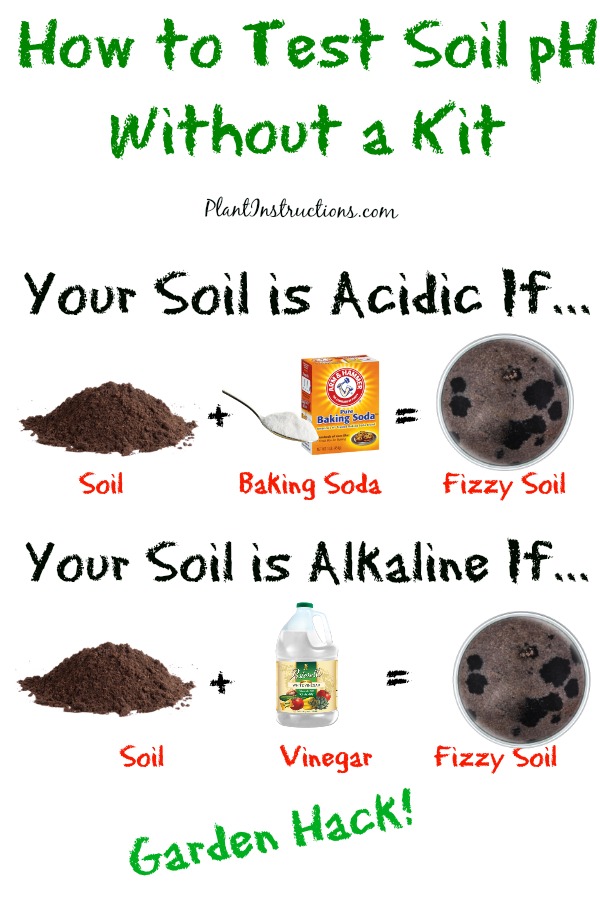
Soil pH is a critical aspect of soil health that often goes overlooked by gardeners, yet it plays a fundamental role in the growth and vitality of plants. pH is a measure of the acidity or alkalinity of the soil on a scale from 0 to 14, with 7 being neutral. Values below 7 indicate acidic soil, while values above 7 represent alkaline soil. This seemingly simple measure has profound implications for the availability of nutrients in the soil and can significantly affect plant health.
The importance of soil pH lies in its influence on the solubility of minerals and nutrients. Most plants thrive in a slightly acidic to neutral soil (pH 6.0 to 7.0) because, in this range, essential nutrients like nitrogen, phosphorus, and potassium are readily available for absorption by plant roots. When the pH falls out of this optimal range, certain nutrients become less available, and plants may show signs of nutrient deficiency even in well-fertilized soils. For instance, in highly acidic soils, elements like manganese and aluminum can become too available, potentially reaching toxic levels for plants. Conversely, in alkaline soils, there can be a deficiency in iron, leading to chlorosis, a condition where leaves turn yellow due to a lack of chlorophyll.
Understanding the pH requirements of specific plants is crucial for successful gardening. Blueberries, azaleas, and rhododendrons, for example, prefer more acidic soil (pH 4.5 to 5.5), which allows them to absorb sufficient iron and other micronutrients. Vegetables and lawn grass generally prefer neutral to slightly acidic conditions. Ignoring soil pH can lead to suboptimal growth, poor yield, or even plant death.
Adjusting soil pH is a manageable task with the right approach. To raise the pH of acidic soil, gardeners can apply lime (calcium carbonate), while elemental sulfur or aluminum sulfate can lower the pH of alkaline soils. However, altering soil pH is not an instant process; it requires time and regular monitoring to achieve and maintain the desired level. Additionally, the amount of amendment needed depends on the soil type; sandy soils require less amendment than clay soils to change the pH.
Regular testing of soil pH is essential for maintaining the health of your garden. Soil pH can change over time due to factors such as rainfall, the decomposition of organic matter, and the application of fertilizers. Home gardeners can use pH testing kits or digital pH meters for quick assessments, or they can send soil samples to a local extension service for more comprehensive analysis.
In conclusion, soil pH is a key determinant of soil health and plant growth. By understanding and managing soil pH, gardeners can create optimal conditions for their plants, leading to lush, productive gardens. Regular testing and appropriate amendments can ensure that soil pH supports the diverse needs of your garden plants, enhancing both beauty and yield.
Conclusion
Soil is not just dirt—it's a living, breathing ecosystem that underpins the health of our gardens and our planet. By understanding and nurturing soil health through practices like composting, planting cover crops, and soil testing, gardeners can create more productive, sustainable, and resilient gardens. The secret life of soil is complex and fascinating, and by paying attention to it, we can unlock the full potential of our gardens.

